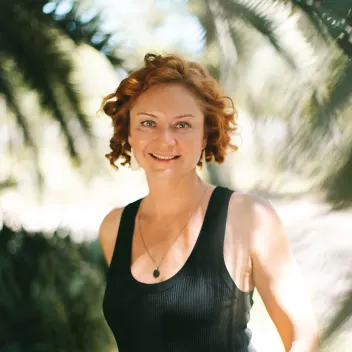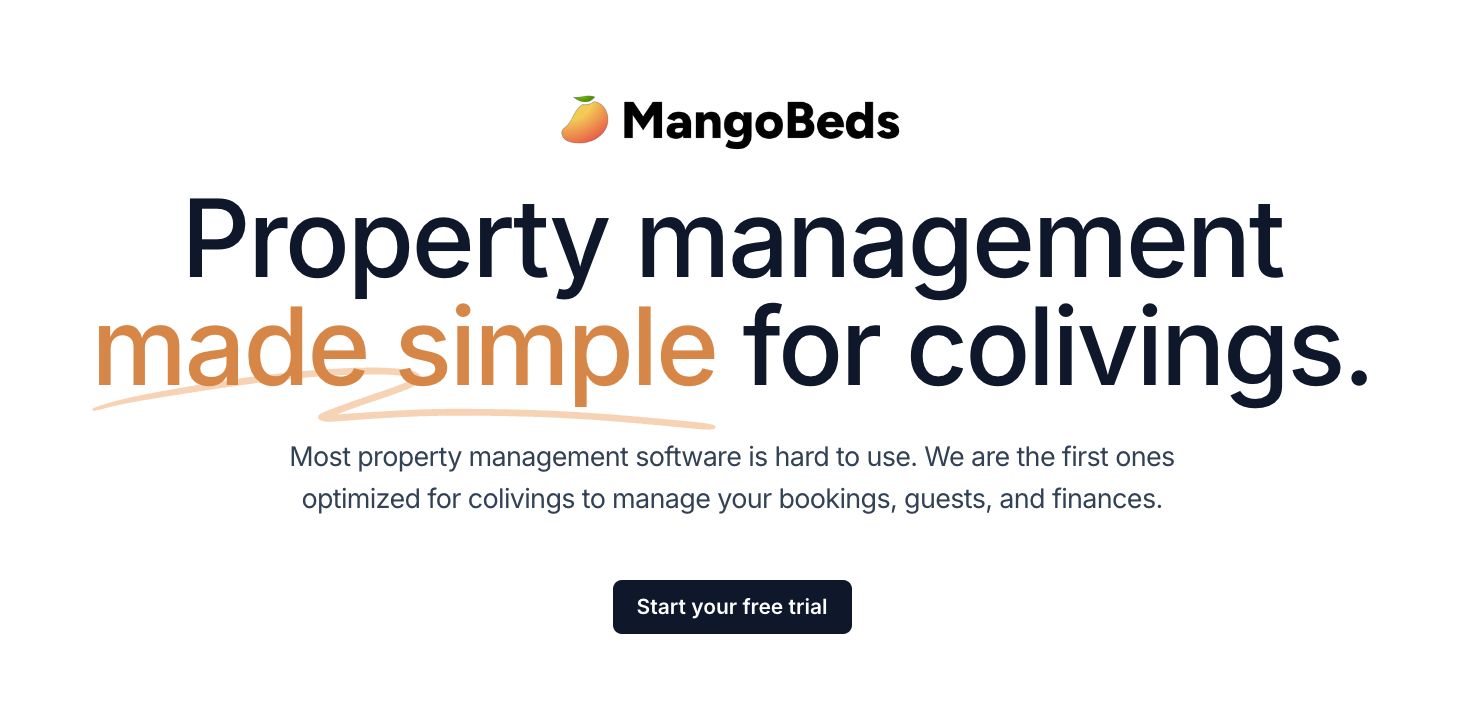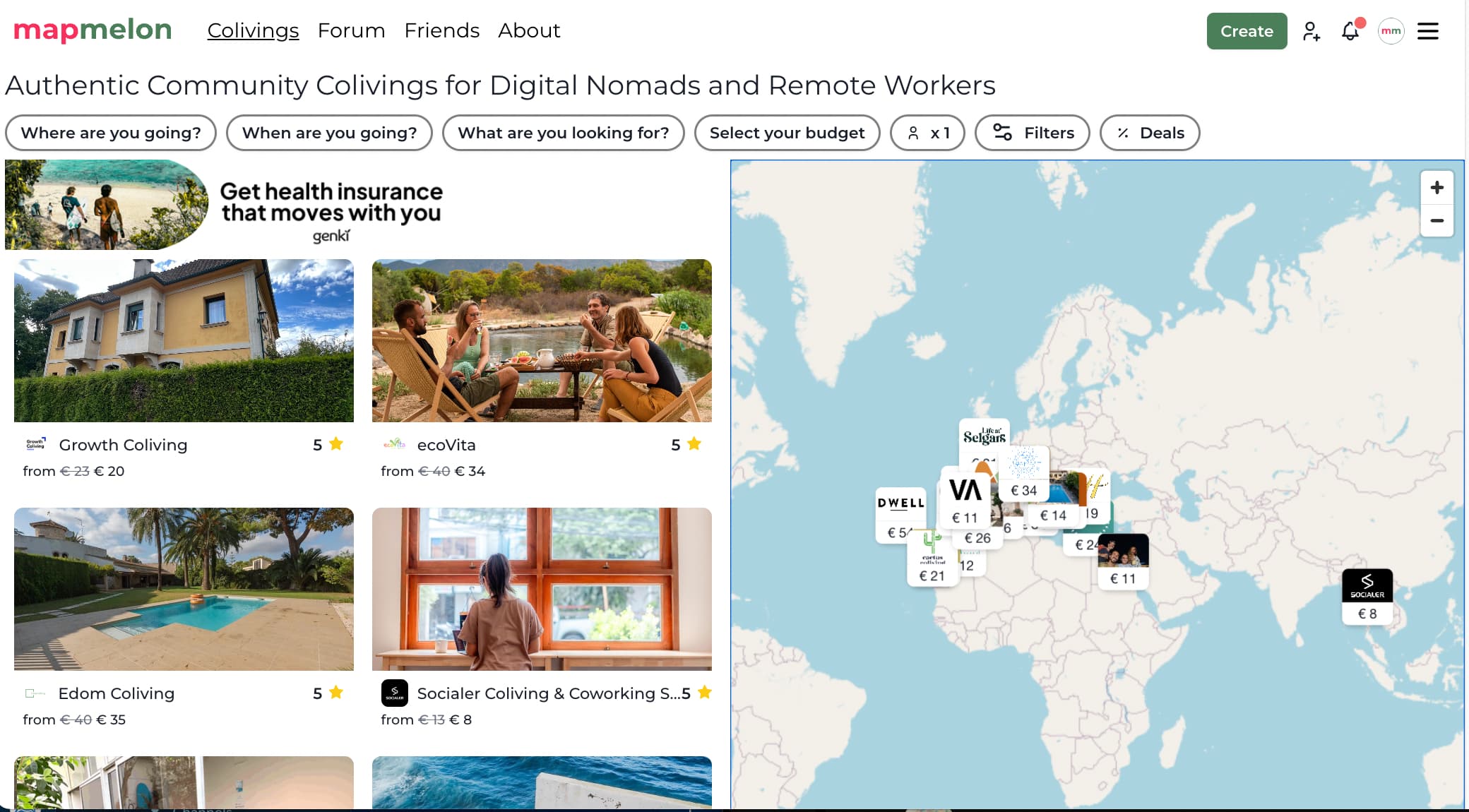César: Let’s do this! Oh shoot, I have a little bit of that here. That’s cute! Hello, welcome to another episode of Colivers Club. Today I’m here with Kate Sifman. How are you, Kate?
Kate: Hi, I’m good, I’m good. Thank you so much for having me, César. We’re also here at Nomad World Fest in sunny—very, very warm—Albufeira, in the south of Portugal.
César: Yeah, and it’s funny because we both decided to wear black today, but it’s so hot! Maybe we should change clothes and head to the beach after the podcast.
Kate: The beach sounds like a great idea. You can take the girl out of Brooklyn, but you can’t take the Brooklyn—or New York—out of the girl. Hence, the black.
César: I think we actually met at Bansko Nomad Fest last year. It was a pretty life-changing experience for me. I remember your talk really stood out—you were blending digital nomadism with interior design and architecture. All part of your project, AOMA Coliving. Can you tell us a bit more?
Kate: Yeah! What I always say is that the spaces where we spend most of our time—coworking spaces, housing, airports, train stations, schools—aren’t really designed with our well-being in mind. They’re built around profit, not people. So we end up spending 90% of our lives in places that don’t support our health, our goals, or our connection to others and nature.
I wanted to change that—one space at a time. So AOMA is a blueprint for how we can build and live in a way that’s more in tune with ourselves, with each other, and with nature.
César: And it’s all starting in a very specific place in Portugal, right? Why Ericeira?
Kate: Ericeira is magical. It’s a little surf town with a vibe. I keep meeting people who say, “I came for three days and ended up staying for three years.” It’s beautiful, 40 minutes north of Lisbon, which is becoming a major innovation hub in Europe.
It’s also a World Surfing Reserve, so there are a lot of surfers who also live location-independent lifestyles. Even before COVID, when I arrived in 2018, I already saw that happening—surfers, creatives, remote workers making it a base. There are like five or six beaches right next to town, each with different waves. The lifestyle’s just ideal. That’s why we’re building AOMA’s first location there. Long-term, we plan to open a curated collection of these spaces across the Iberian Peninsula.
César: Yeah, even the name Ericeira sounds relaxing—it’s on brand! If it were called something like “Piedra del Carno”… not the same vibe.
Kate: Totally. Ericeira just flows.
César: And AOMA is the name of the whole collection, starting there. I also wanted to ask about your funding model, which I know is quite unique. Can you share that with us?
Kate: Sure! What started as just me and a dream—and a building—has evolved into a real community project. In the past couple of years, we’ve had several investors: friends, people from the nomad community, others around Portugal and globally who loved the idea of building real infrastructure for our lifestyle.
Up until now, the minimum investment was €20,000, which allowed us to raise our full round. But something didn’t feel right—I wanted it to be more accessible. So I decided to open the final €50,000 as a community crowdfunding round. Now, people can invest from as little as $100.
Everyone who invests gets a community membership, which includes discounted stays and access to our network. Depending on how much you invest, you also get coworking days, stays, etc. It’s my way of making this truly inclusive and democratic.
César: I love that. And before all this, you spent seven years living out of hotels, right?
Kate: Yeah. After college, I ended up in London, fell in love, and started a photo agency with my partner. We had a successful press photo agency, and we traveled the world—360 days a year, living out of hotels.
That’s when I realized how deeply space affects how you feel. One hotel would give me energy; another would make me feel drained. Everything else in my life was the same—stress, work, travel. But the space? That changed everything. So years later, when I moved to Portugal, I decided to really dive into this.
César: So from that experience, what are things you didn’t want in your coliving?
Kate: Oh wow, so many. First, we’re building for mid-term stays—a week to a few months. That’s a very different user than a tourist or a long-term tenant.
For example: a big, shared communal kitchen is essential. It’s the soul of the house. Everyone can have a little coffee corner in their room, but the cooking happens together. No single-use coffee pods allowed. V60s, French presses, yes. But the kitchen is where people meet.
Also: lighting! As a woman especially, I care about how lighting works when I’m doing makeup or winding down. That “mood lighting” trend in hotels is cute, but not practical. We’ll have different light temperatures for different spaces. Bright white light in coworking, warm yellow light in bedrooms.
We’re also building with wood and cork insulation—no plastic. It’s better for airflow, prevents mold, and feels more natural. And yes, every bathroom will have a skylight. When you shower, you’ll see the sky.
And of course, we’ll have plants. Even in the bedrooms. It’s more work for housekeeping, but nature belongs inside too.
César: So all of that fits into your Thrive framework, right?
Kate: Exactly. Thrive is built around six core modules—things like comfort, community, movement, etc.—and it’s how we evaluate whether a space really supports human needs.
One big one is access to quality food. Some retreats sound amazing but are in the middle of nowhere—you end up stuck with one car between 15 people. I believe you should be no more than 15 minutes walking from a decent food source. Same for green space.
César: And your branding is very clear: eco-luxurious, but not elitist. Can you explain that?
Kate: Totally. For me, true luxury isn’t about money or gold toilets. It’s about peace, connection, nature, and design that feels good. It’s about quality—not price.
We use biophilic design, natural materials, and every room is themed around a piece of art by a Portuguese artist. So the colors, textures, and layout all revolve around that piece. It creates a real emotional connection—not just a number on a door.
César: That’s beautiful. And what are your top 3 tips for thoughtful coliving design?
Kate:
-
Design for behavior. Think about what your residents will actually do throughout the day. Work solo, group hangouts, alone time, community dinners—design for all of it.
-
Integrate the local community. Don’t build a bubble. We’re opening our coworking space to locals and partnering with local food producers for veggie baskets. Your residents’ money can support local farmers instead of supermarkets.
-
Make it easy to live better. People shouldn’t have to drag monitors, cables, or 10 chargers. Offer the tools they need. Even things like mirrors, good lighting, or hairdryers—they matter. Little details can make a big difference.
César: I love that. It’s also nice that your events, like coworking and tennis, are bringing locals and nomads together.
Kate: Yes! We even won an award in Ericeira for being the most integrated expat initiative. Locals come cowork with us—it’s a great mix.
César: That’s super important. Like you said, digital nomads sometimes get a bad rep for gentrification, but I feel like the spaces I see are doing the opposite.
Kate: Yeah, it’s not just one coworking space that’ll fix it, though. We need regional and government support too. But this lifestyle can revitalize rural areas, for sure. If digital workers move there, they bring money and can support the local baker, farmer, etc.
César: Totally. Why stop at colivings? Let’s build co-villages.
Kate: Actually, some are doing that! Very ambitious, but exciting. And then maybe co-cities, co-countries…
César: Whoa! Sounds wild.
Kate: There’s even a think tank called Plumia, part of SafetyWing, trying to build country-like communities online. Bottom-up, value-based “countries” on the internet. Big vision, but super interesting.
César: That’s amazing. And I’ve always dreamed of having shared maker spaces in colivings. One place for tools, workshops, maybe even someone teaching stuff.
Kate: I did that for a bit in Philly! A huge maker space with welding, woodworking—you name it. I loved it. I’d love to offer something like that one day.
César: And maybe a shared car fleet, too!
Kate: That’s trickier in Southern Europe. People are still very attached to car ownership as part of their identity. But yeah, the younger generation is shifting. Owning stuff is expensive now—sharing just makes sense.
César: And connection! That’s what coliving is really about, right?
Kate: 100%. We’ve been raised in individualist societies, but at our core, we are social, connected beings. Coliving is about building a family. That’s what I’m doing—building a home and a family for myself.
César: Beautiful. And by the way, thanks to Mapmelon for sponsoring this episode! Since you’re launching a coliving—will AOMA be on Mapmelon?
Kate: Absolutely. Because Mapmelon is real. It shows authentic colivings—not hotels pretending to be one. It’s built by nomads, for nomads.
César: Word of mouth is everything. And Mapmelon feels like that—the word-of-mouth platform.
Kate: Exactly.
César: Anything else you’d like to add?
Kate: Just thanks again. This was such a fun conversation.
César: Thank you so much, Kate! Make sure to follow AOMA and get involved in the project if you can. The community round is open, and you can join from just $100. Follow Kate on Instagram and LinkedIn at @aoma.coliving, and check out aoma.co.
Kate: Thank you!
César: Thanks for tuning in to Colivers Club, powered by Mapmelon. See you in the next episode. Bye!




0 Comments